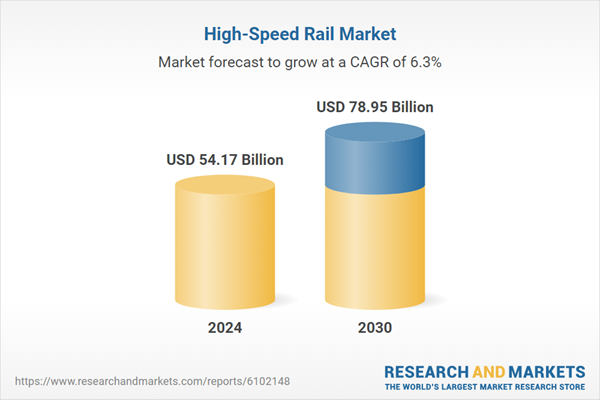Speak directly to the analyst to clarify any post sales queries you may have.
10% Free customizationThis report comes with 10% free customization, enabling you to add data that meets your specific business needs.
The demand is driven by rising urbanization, environmental concerns, and the push for regional economic integration. Key modernization projects across Asia Pacific, Europe, and the Middle East are reinforcing the shift toward high-speed rail as a strategic infrastructure investment. Leading regions like China and Japan continue to expand extensive networks, while emerging economies are entering the HSR space with ambitious national development plans. Technological advancements, environmental policies, and long-term urban mobility strategies are expected to shape the market’s growth trajectory over the coming years.
Key Market Drivers
Urbanization and Growing Intercity Connectivity Needs
Rapid urban expansion and increased demand for efficient regional mobility are key factors fueling high-speed rail deployment. As populations concentrate in cities and travel between urban centers becomes more frequent, the need for high-capacity, time-efficient transport systems is growing. High-speed rail offers a competitive edge over air travel within medium-distance ranges due to its convenience, reliability, and reduced boarding times. In Asia and Europe, national and regional governments are prioritizing HSR projects to support regional integration, reduce emissions, and alleviate highway and airport congestion. With over 100 high-speed corridors under development worldwide and urban populations projected to reach 68% of the global total by 2050, HSR is set to become a cornerstone of sustainable urban mobility frameworks.Key Market Challenges
High Capital Investment and Long Payback Periods
The high-speed rail market faces significant financial hurdles due to the large-scale capital investments required for construction, land acquisition, and advanced infrastructure. Building dedicated tracks, electrification systems, and specialized rolling stock demands major funding, often exceeding USD 20-70 million per kilometer depending on project complexity.Extended timelines for construction and regulatory approvals further delay returns on investment, deterring private sector participation and necessitating heavy reliance on government funding. The long payback period - often two to three decades - combined with unpredictable ridership trends and high operational costs, poses a major barrier to project feasibility, particularly in developing regions with competing infrastructure priorities. As a result, funding limitations and cost uncertainties remain major constraints on the global expansion of high-speed rail.
Key Market Trends
Expansion of HSR Networks in Emerging Economies
A notable trend in the high-speed rail industry is the accelerating adoption in emerging markets across Asia, the Middle East, Africa, and Latin America. Governments in these regions are embracing HSR as a strategic tool for national development, urban mobility, and economic diversification. Major initiatives include India’s Mumbai-Ahmedabad bullet train, Egypt’s cross-country network linking the Mediterranean and Red Sea, and Southeast Asia’s first HSR in Indonesia. These projects are increasingly supported through bilateral agreements, multilateral funding institutions, and public-private partnerships. Beyond transportation, HSR is being positioned as a driver for tourism, job creation, and regional integration. As these nations overcome financial and regulatory barriers, their high-speed rail networks are set to become key contributors to the global HSR market's future growth.Key Market Players
- CRRC Corporation Limited
- Alstom S.A.
- Siemens Mobility
- Hitachi Rail
- Kawasaki Heavy Industries
- Hyundai Rotem
- Talgo S.A.
- ABB Ltd.
- Mitsubishi Electric Corporation
- Thales Group
Report Scope:
In this report, the Global High-Speed Rail Market has been segmented into the following categories, in addition to the industry trends which have also been detailed below:High-Speed Rail Market, By Technology:
- Wheel-on-rail
- Maglev
High-Speed Rail Market, By Application:
- Passenger transportation
- Freight transportation
High-Speed Rail Market, By Component:
- Trainsets
- Infrastructure
- Services
High-Speed Rail Market, By Region:
- North America
- United States
- Canada
- Mexico
- Europe
- Germany
- France
- United Kingdom
- Italy
- Spain
- South America
- Brazil
- Argentina
- Colombia
- Asia-Pacific
- China
- India
- Japan
- South Korea
- Australia
- Middle East & Africa
- Saudi Arabia
- UAE
- South Africa
Competitive Landscape
Company Profiles: Detailed analysis of the major companies present in the Global High-Speed Rail Market.Available Customizations:
With the given market data, the publisher offers customizations according to a company's specific needs. The following customization options are available for the report.Company Information
- Detailed analysis and profiling of additional market players (up to five).
This product will be delivered within 1-3 business days.
Table of Contents
Companies Mentioned
- CRRC Corporation Limited
- Alstom S.A.
- Siemens Mobility
- Hitachi Rail
- Kawasaki Heavy Industries
- Hyundai Rotem
- Talgo S.A.
- ABB Ltd.
- Mitsubishi Electric Corporation
- Thales Group
Table Information
| Report Attribute | Details |
|---|---|
| No. of Pages | 185 |
| Published | June 2025 |
| Forecast Period | 2024 - 2030 |
| Estimated Market Value ( USD | $ 54.17 Billion |
| Forecasted Market Value ( USD | $ 78.95 Billion |
| Compound Annual Growth Rate | 6.3% |
| Regions Covered | Global |
| No. of Companies Mentioned | 10 |









